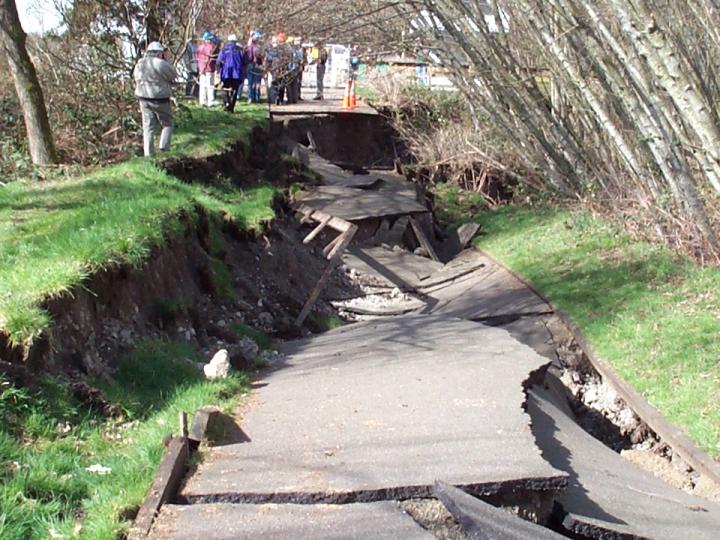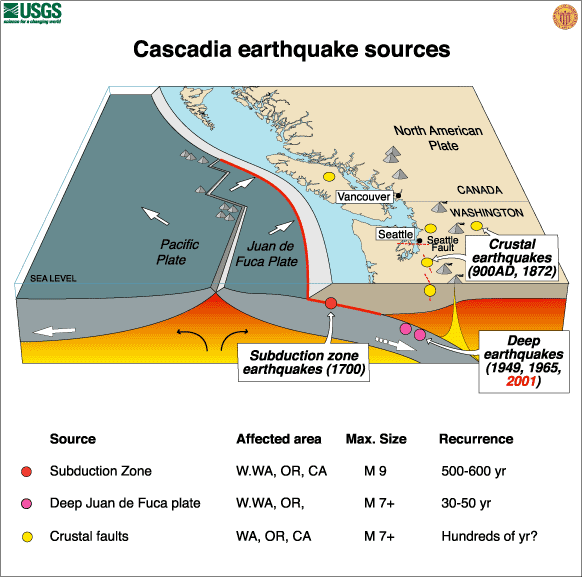Virtual
Tour > Intro > What Causes an EQ > How we locate EQ's > Equipment > Volcanoes > The End!
What Causes an Earthquake?

An Earthquake is caused by the fracturing of
rock. The resulting break is called a fault. As plate tectonics cause the crust
of the earth to shift and bend, great stresses are built
up underneath the ground. When the rock can no longer take
the stress of being pushed and pulled, it breaks creating
a fault along which earthquakes can occur.
 |
The Seattle area is susceptible to three
major fault systems. There is the Cascadia Subduction
zone (shown in red), the deep Benioff zone
(shown in pink), and the shallow crustal faults
(shown in yellow). |
Photo caption: The above
photograph was taken after the
Nisqually earthquake. This is not a fault, but an example of
what is called ground failure.
Next
>>>
|
|

